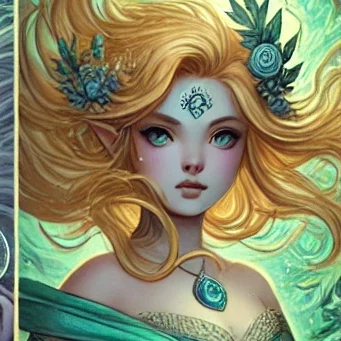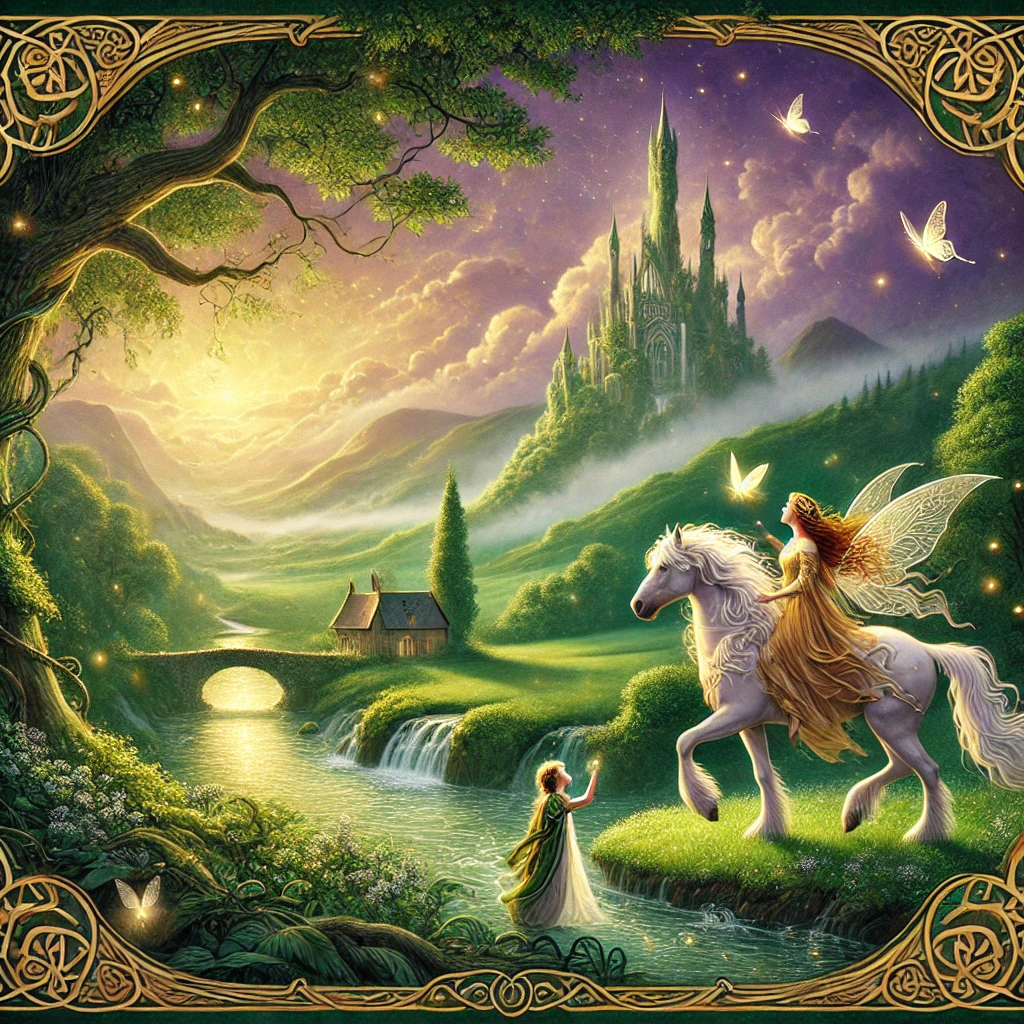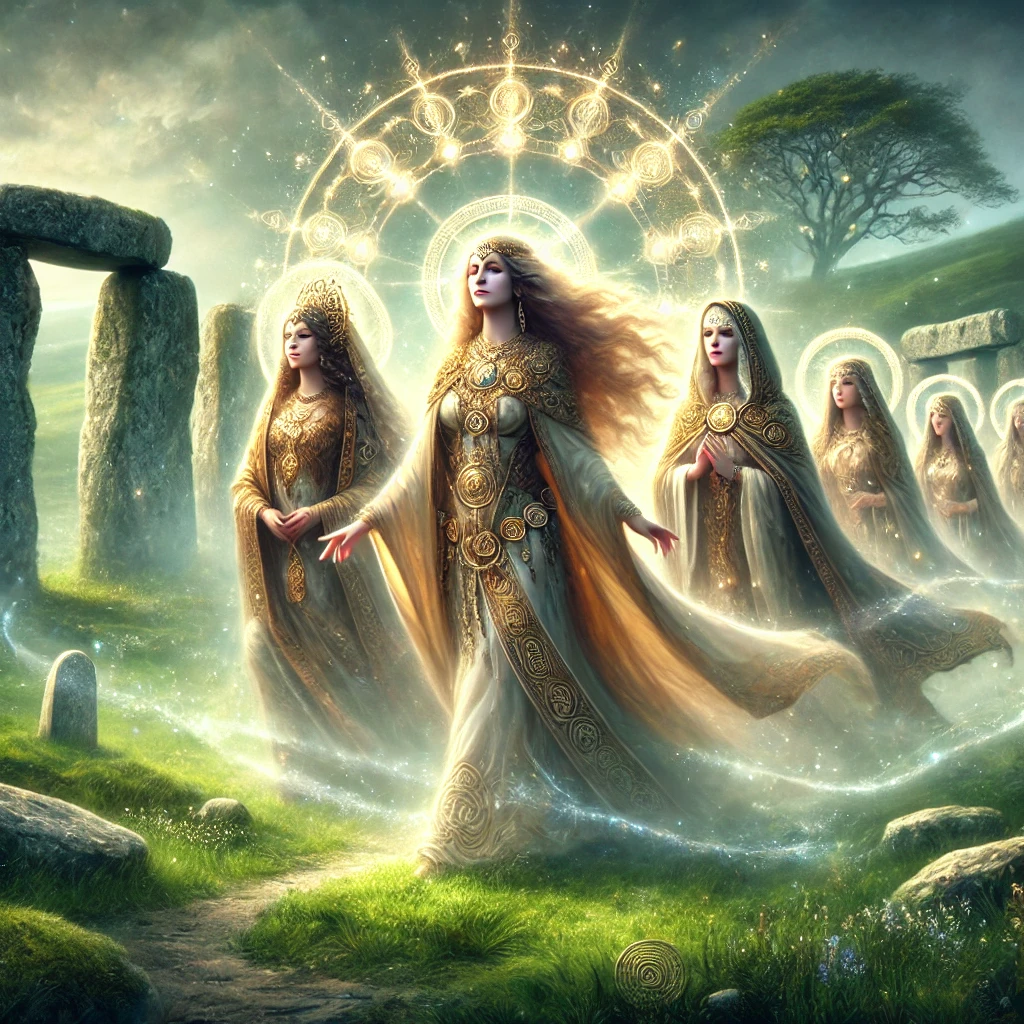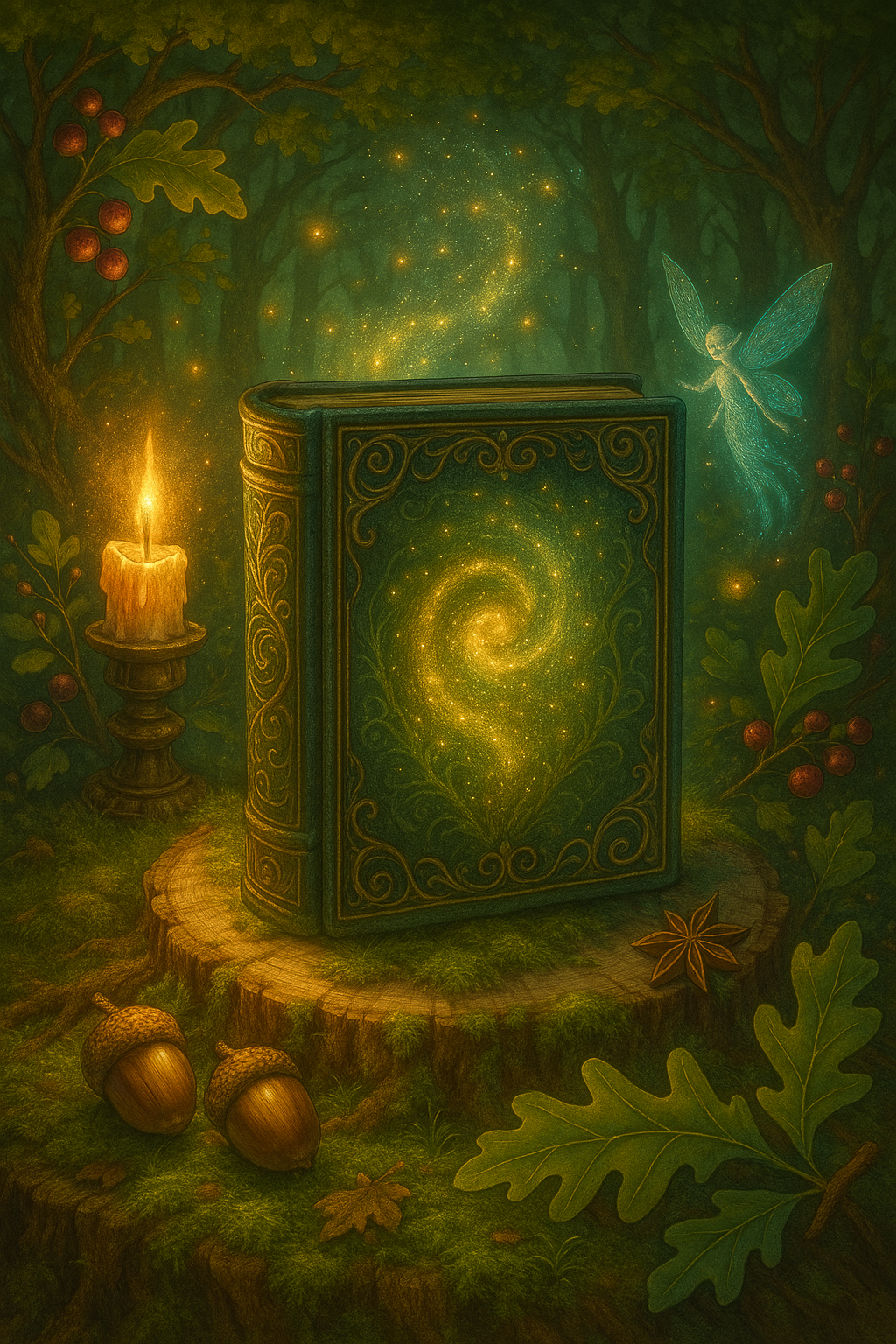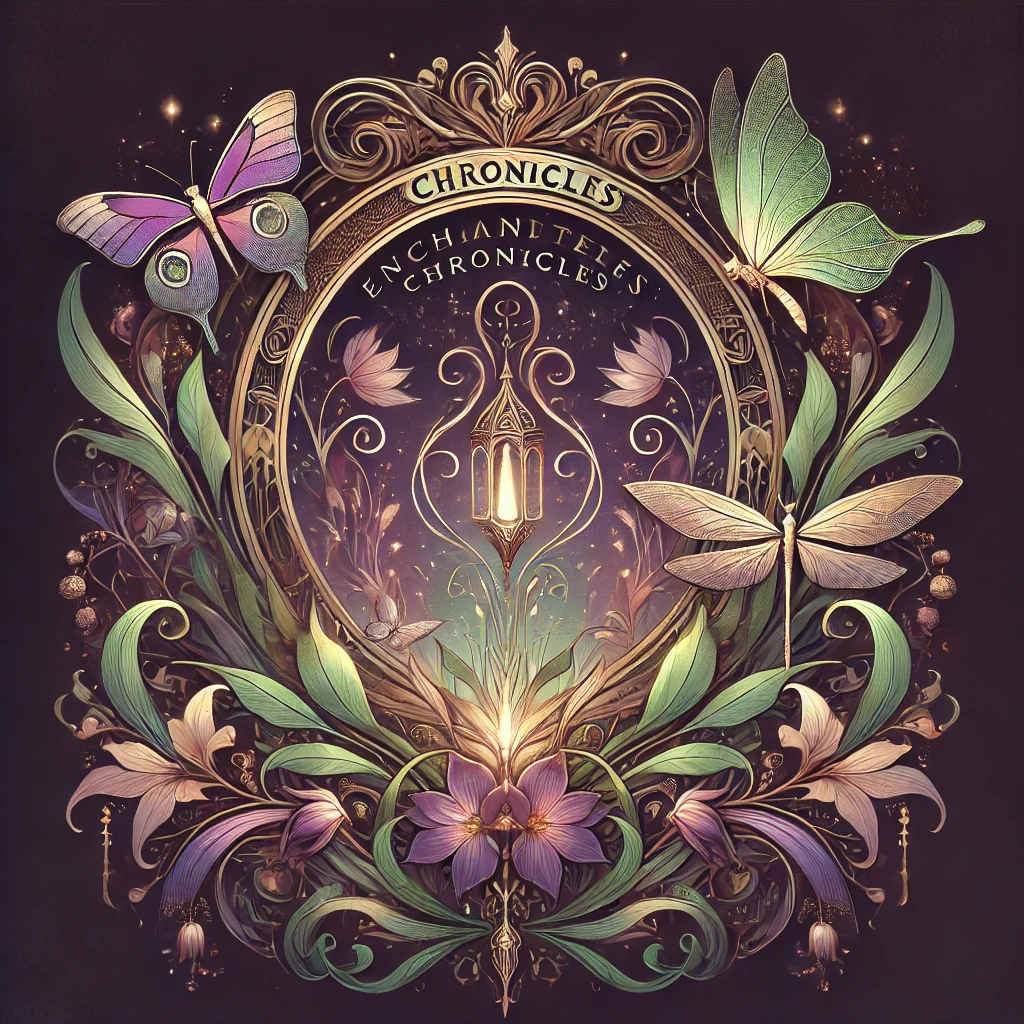The Tuatha Dé Danann: Ancient Rulers and Fairies of Irish Mythology
The Tuatha Dé Danann (“People of the Goddess Danu“) are one of the most fascinating and mysterious figures in Irish mythology.
Described as powerful, godlike beings, they are said to have ruled Ireland before being defeated and retreating into the mystical Otherworl, hidden beneath hills and mounds. Their legend is deeply intertwined with the history, folklore, and cultural identity of Ireland. But who were they, and why do they continue to captivate the imagination of so many today?
Origins of the Legend
The story is first recorded in medieval Irish texts such as the Lebor Gabála Érenn (The Book of Invasions), a mythological account of Ireland’s early history. According to legend, the Tuatha Dé Danann came to Ireland from the sky, arriving in dark storm clouds or landing in ships cloaked in mist. Some interpretations suggest they came from four great mythical cities—Falias, Gorias, Murias, and Findias—each of which bestowed upon them sacred treasures:
The Stone of Fal (Lia Fáil): A magical stone that would cry out when touched by the rightful king of Ireland.
The Spear of Lugh: A weapon that ensured victory in battle.
The Sword of Nuada: A blade that none could escape once drawn.
The Cauldron of Dagda: A vessel that provided endless nourishment.
These powerful artifacts symbolized their superior knowledge and magical abilities, making them both revered and feared by later inhabitants of Ireland.
The Age of the Tuatha Dé Danann and Their Rule
Once in Ireland, the Tuatha Dé Danann clashed with the Fir Bolg, an earlier race inhabiting the island. After a great battle at Mag Tuired, they emerged victorious, with their king, Nuada, losing his hand in combat. Because he was no longer “whole,” he was deemed unfit to rule, and the throne was given to the enigmatic Bres, a ruler of mixed Fomorian blood.
Bres proved to be a tyrant, and his rule led to another great battle—the Second Battle of Mag Tuired—where the Tuatha Dé Danann fought against the Fomorians, a race of monstrous beings. With the help of their champion Lugh, they secured victory, restoring their power.
During their reign, they were said to have taught humanity arts, magic, and wisdom. They were believed to be not just warriors but also poets, healers, and druids, deeply connected to the land and natural forces of Ireland.
The Defeat and Retreat into the Otherworld
Their reign came to an end when the Milesians, ancestors of the modern Irish, arrived. The two groups made a pact: the Milesians would rule the surface, while the Tuatha Dé Danann would retreat into the Sidhe, mystical underground realms accessed through Ireland’s ancient burial mounds and hills.
This transition marked the beginning of the Tuatha Dé Danann as fairy-like beings, becoming known as the Aos Sí (People of the Mounds) in later folklore. It is said that they still live in these hidden realms, emerging at special times such as Samhain and Beltane, when the veil between worlds is thin.
The Legacy in Irish Folklore
It evolved into central figures of Irish fairy lore, becoming associated with various supernatural beings such as:
The Sidhe: Enchanting and powerful fairy folk.
The Banshee: A spectral woman whose wail foretells death.
The Leprechauns: Mischievous tricksters often guarding hidden treasures.
Many Irish legends attribute great wonders to them, such as shapeshifting, weather control, and immortality, reinforcing their divine status in Irish mythology.
Their legacy Today
Today, the Legend remains a vital part of Irish cultural identity. Their presence can be felt in:
Modern Paganism and Druidry: Many contemporary spiritual movements honor them as divine ancestors.
Irish Literature and Pop Culture: They appear in books, films, and TV series, keeping their stories alive for new generations.
Tourism and Heritage: Sacred sites linked to them, like the Hill of Tara and Brú na Bóinne, draw thousands of visitors yearly.
Their legend continues to inspire, reminding people of Ireland’s deep-rooted connection to myth, magic, and mystery.
Conclusion
The Tuatha Dé Danann are more than just mythological figures—they are woven into the very soul of Ireland. Representing a golden age of magic, wisdom, and connection to nature, they continue to influence Irish culture and folklore. Whether seen as ancient gods, mystical beings, or lost rulers, their story remains one of the most enduring and captivating tales of the Emerald Isle.
